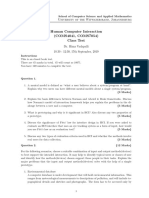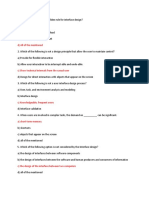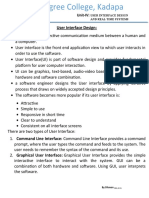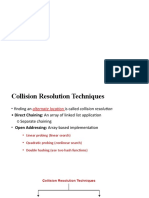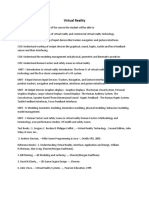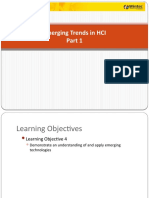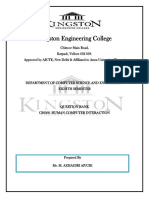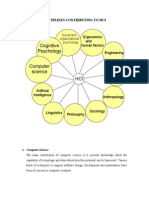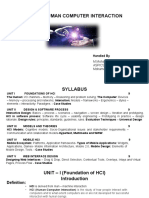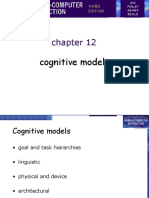0% found this document useful (0 votes)
1K views30 pagesCognitive Models in HCI
Cognitive models represent aspects of users as they interact with systems, including their understanding, knowledge, intentions, and processing. Common categories are competence models, which represent expected user behavior, and performance models, which allow analyzing routine behavior in limited applications. Models include goal hierarchies, representing how users achieve goals through subgoals, linguistic models using notations like BNF to represent user-system dialog as a language, and physical models like KLM representing motor actions. Architectural models make assumptions about the architecture of the human mind.
Uploaded by
Jerald Pacheco JoseCopyright
© © All Rights Reserved
We take content rights seriously. If you suspect this is your content, claim it here.
Available Formats
Download as PDF, TXT or read online on Scribd
0% found this document useful (0 votes)
1K views30 pagesCognitive Models in HCI
Cognitive models represent aspects of users as they interact with systems, including their understanding, knowledge, intentions, and processing. Common categories are competence models, which represent expected user behavior, and performance models, which allow analyzing routine behavior in limited applications. Models include goal hierarchies, representing how users achieve goals through subgoals, linguistic models using notations like BNF to represent user-system dialog as a language, and physical models like KLM representing motor actions. Architectural models make assumptions about the architecture of the human mind.
Uploaded by
Jerald Pacheco JoseCopyright
© © All Rights Reserved
We take content rights seriously. If you suspect this is your content, claim it here.
Available Formats
Download as PDF, TXT or read online on Scribd
/ 30







